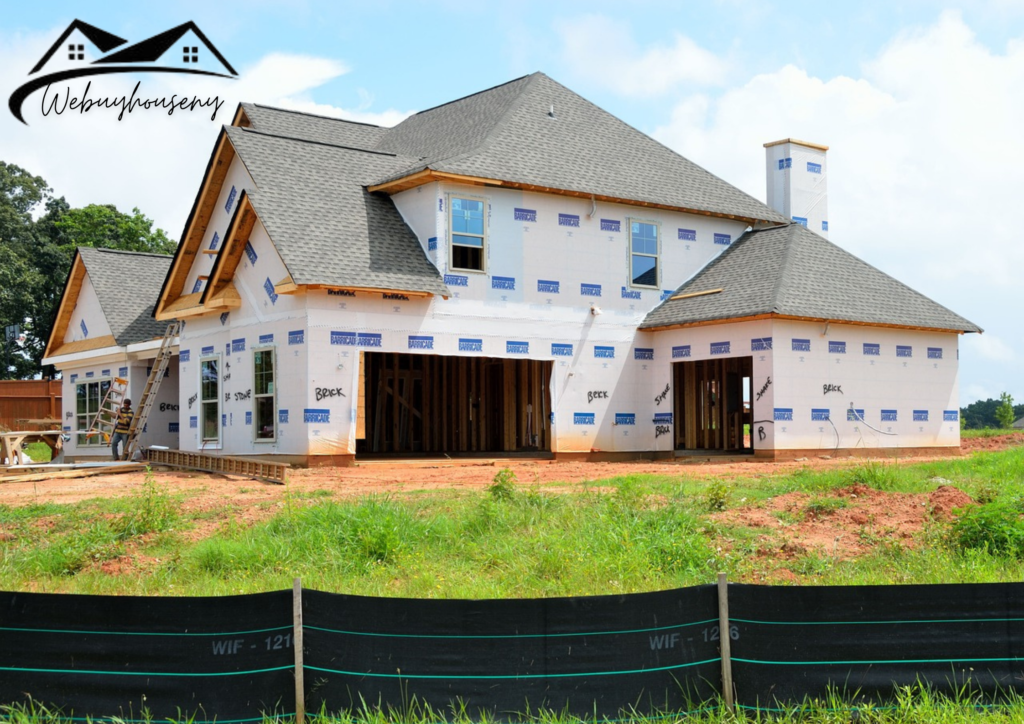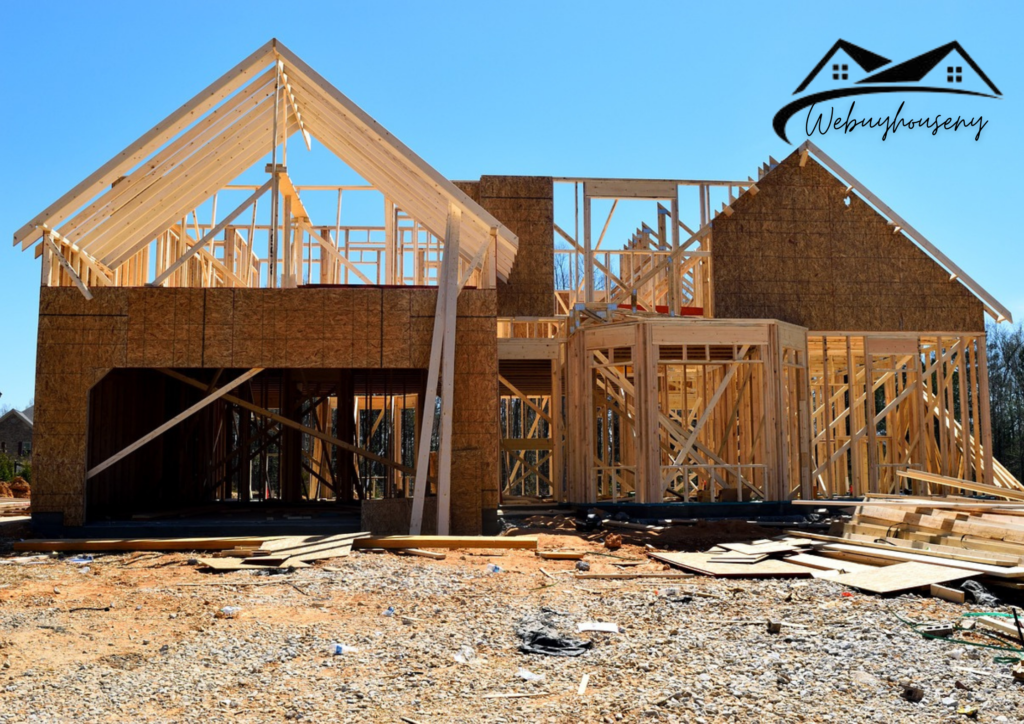Introduction
Have you ever dreamt of creating a home that’s uniquely yours? If so, you’re not alone. Many people are turning to the idea of buying land to build their dream house. This allows you to design a custom home that suits your needs and preferences, avoiding the compromises of pre-existing homes. However, before you embark on this exciting journey of creating your own home, there are some essential steps and considerations you should be aware of. In this guide, we’ll walk you through everything you need to know about how to buy land to build a house, so you can determine if it’s the right choice for you. Let’s get started on your path to homeownership and creativity!

Discover Your Dream Plot of Land
To begin the journey of how to purchase land to build a house your first task is to locate available land for sale. This is the crucial starting point for crafting your dream home. Many websites can help you with this search, such as realtor.com, Zillow, LandSearch, or PropertyShark. Additionally, you can explore properties held by your state’s land bank, which often has a variety of state-owned land for sale, including plots previously used for public purposes, foreclosed upon after private ownership, or entirely undeveloped.
When you discover a piece of land that captures your interest and is conveniently located, you must visit the area and assess whether the land aligns with your initial expectations and if the neighborhood meets your requirements.
Crafting Your Financial Blueprint
Understanding the cost of land per acre is a crucial aspect of learning how to buy land to build a house. These costs can vary significantly from one city, state, or region to another. It’s important to note that purchasing vacant land and then financing the construction of a home can be notably more expensive than buying an already-built home, regardless of the state.
Suppose the additional costs aren’t a concern and you’re committed to building your own home. In that case, you must also consider expenses like land appraisal, land survey, and consulting with a general contractor to ensure you have a clear understanding of the financial aspects involved in the process.
Unlocking Financial Pathways for Your Land Purchase
When you’re looking into how to buy land to build a house, it’s important to know that the financing process can be different from buying a traditional home, especially if the land is undeveloped and lacks utilities. Here are some financing options to consider:
New Construction Loan
This type of loan allows you to finance your land purchase and the cost of building your home. These loans often become permanent mortgages once the construction is complete. The benefit is that your lender may require a smaller down payment than financing the land and construction separately, usually around 10-20% down. Some banks and credit unions may offer lower costs if you accept a higher interest rate. However, new construction loans typically have strict requirements, including excellent credit, a low debt-to-income ratio, and detailed architectural plans.
Land Loan and Construction Loan
If you intend to take out a loan for the land, there are two primary options. A construction loan is suitable if you plan to start building immediately after purchasing the land. These loans are short-term, come with higher interest rates, and cover various costs, including land, building materials, contractor labor, and permits.
If you require additional time before commencing construction, a land loan is a suitable option, although it may entail a higher down payment and interest rates since it lacks collateral. It can be challenging to secure a land loan because of the risk to the lender, who typically secures the loan with the property, much like a mortgage.
Lot Land Loan
If you’re ineligible for a construction loan or lack a specific building schedule, you might have to secure separate financing for your land purchase and construction. Lot land loans are designed for land already prepared for residential development. They usually require a down payment of 10-20% and are appropriate for lots with proper zoning, building permits, access to public roads, and nearby utilities.
Raw Land Loan
For land that doesn’t qualify for a lot land loan, you might need a raw land loan. These are challenging to obtain, often requiring a significant down payment, sometimes as much as 50%, and they typically come with higher interest rates.
Seller Financing
Vacant land is sometimes sold with the option of seller financing, where the seller directly provides financing to the buyer, which can be useful if traditional lenders are challenging to work with.
Demystifying Zoning Regulations for Your Dream Home
When you’re buying an existing home, you can generally assume that it’s already approved for residential use. However, this assumption only sometimes holds in the path of how to purchase land to build a house. It’s crucial to determine what you’re allowed to do with the property before finalizing the purchase. Obtaining land with zoning restrictions can swiftly derail your custom home-building plans. To avoid potential roadblocks, it’s essential to research the land and perform your due diligence. One way to do this is by visiting the county planning office and directly inquiring about building restrictions.
Evaluating Your Land’s Buildability
In learning how to buy land to build a house, one of the most vital steps is to have the land professionally surveyed. A surveyor’s expertise will provide you with essential information, such as the land’s dimensions, any potential property use rights held by others, and the land’s accessibility, should you decide to build on it. Other critical factors to consider include soil quality, as it can impact the safety of home construction or well-digging. Occasionally, environmental issues may arise, making it impossible to build on the land.
Additionally, you should check if the land is classified as wetlands, as these properties often come with strict regulations that vary between city, county, state, and federal levels. Locating local wetland inventory maps can help you identify potential problem areas. Land appraisal is another crucial step, aiming to determine the land’s market value accurately. An appraiser evaluates zoning, accessibility, and other features while comparing the land to similar plots in the area to establish its correct value.
While the cost of a land survey can range from $375 to $750, a residential land appraisal typically falls within the range of $200 to $600. For larger or rural plots of land, especially those with more acreage, the appraisal cost may go up from $1,000 to $3,000, depending on the size and location.
Assessing Utility Costs for Your Future Home
When considering how to buy land to build a house, utilities like water, electricity, and natural gas are vital for residential properties and are typically managed by the county. If you’re leaning towards a more rural location for your land build, you must determine whether existing utilities are in place. If the land lacks utilities, it’s essential to calculate the additional expenses involved in installing them, which may include a well for water and a septic system for wastewater, along with running electrical lines.
In cases where the land listing or online information doesn’t specify the availability of utilities, it’s advisable to contact the local utility company to inquire about the distance of utilities from the land you’re purchasing. Running power lines over long distances might cost thousands of dollars per mile. Additionally, if your land isn’t linked to the local municipal water system, you may need to have a well drilled, typically costing between $1,500 and $6,000. You might also need to install a septic system or tank, with the complete septic system costing between $10,000 and $25,000, including a leach field, tank, and piping. Large septic tanks designed for community systems average around $7,318 in cost. It’s important to note that these installations may require easements from your neighbors if access to utilities runs through their property.
Gathering Quotes from Local Builders
The most enjoyable part of the how to buy land to build a house process is designing your custom-built home. To ensure you find a builder who truly understands your desires, it’s crucial to be clear about your expectations and timeline. It’s a good idea to talk to several contractors and request detailed quotes. Custom home construction typically takes over six months to complete, so it’s essential to align your expectations with your contractor regarding project costs and your anticipated move-in date.
Environmental Assessment
Ensuring the environmental quality of your land is a critical step in the how to buy land to build a house process. There could be hidden ecological risks you’re unaware of when purchasing land. An environmental assessment typically involves two phases. In the first phase, an environmental engineer examines all the physical and visible aspects of the land to detect any potential contaminants. The second phase is a more comprehensive inspection that often includes the analysis of water, soil, and air samples to provide a more in-depth understanding of the environmental conditions of the land. This assessment helps safeguard your investment and future home from unforeseen environmental hazards.
Unlocking Your Land’s Zoning Potential
Ensuring that the land you’re buying is approved for building a single-family home is a critical aspect of the how to buy land to build a house process. To determine the zoning status of your property, you can reach out to your local government. If you discover your dream property but need to be zoned for single-family housing, you can request a variance from your local government. If granted, a variance permits you to use the land in a way that deviates from the existing zoning regulations without changing the zoning laws.
Additionally, it’s essential to be aware of local Homeowners’ Association (HOA) regulations. In master-planned communities where buyers select lots, HOAs can have a significant influence on what a builder or landowner can construct. The community’s bylaws and rules typically govern the overall appearance and structure types, so it’s essential to be well-informed about these regulations.
Partnering with a Homebuilder For Land Evaluation
When it comes to how to buy land to build a house, having a homebuilding contractor in mind can be a strategic move. In fact, involving them in a land inspection before purchase is a smart approach to ensure your envisioned home aligns with the land’s characteristics. If you opt to engage a custom homebuilder before securing the land, they may guide you towards more cost-effective or better-suited plots. Conversely, if you decide to purchase the land first, you can often customize the home design to harmonize with the land’s unique features, although this route might come with additional costs.

Conclusion
When it comes to the process of how to buy land to build a house, the timeline can fluctuate, influenced by various factors such as construction company capacity and city permitting. It might stretch as long as 3.5 years or zip by in just 12 months, contingent on your specific location. State regulations also come into play; for instance, places like Portland, Maine, usually take seven to 10 months. If you’ve ever dreamt of constructing your very own home, considering the journey of how to purchase land to build a house might be the path for you. Though the process may be lengthy and intricate, the end result of your dream home could make it all


